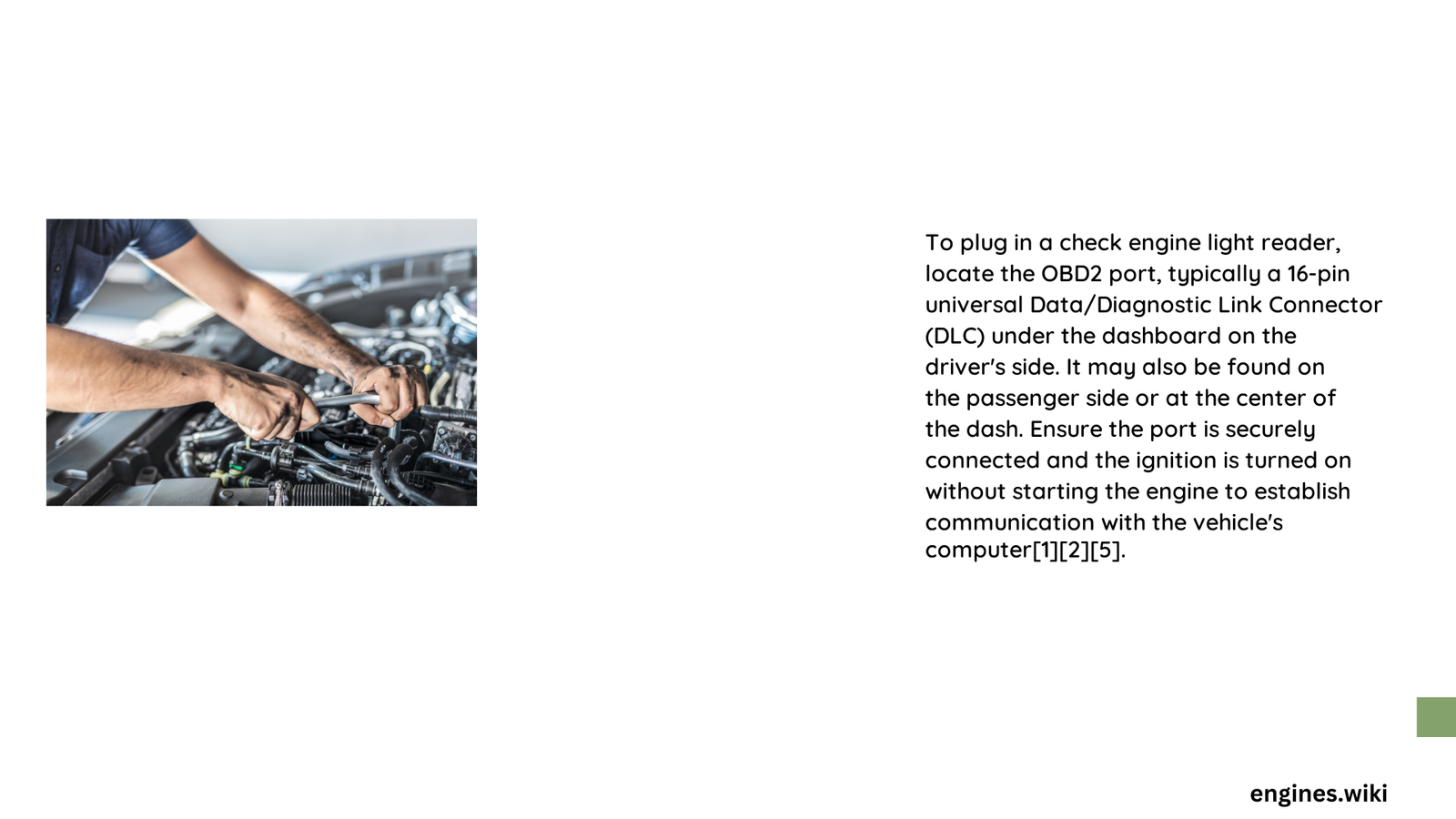Where to Plug in Check Engine Light Reader: Expert Vehicle Diagnostic Guide
Quick Overview
Modern vehicles are equipped with an On-Board Diagnostics II (OBD-II) port that allows mechanics and car owners to quickly diagnose vehicle issues. Finding this crucial diagnostic connection point can be challenging, but this comprehensive guide will help you locate the port efficiently across different vehicle makes and models, ensuring you can easily plug in your check engine light reader.
What Makes the OBD-II Port Location Unique?
The OBD-II port is a standardized diagnostic interface mandated for all vehicles manufactured after 1996 in the United States. Its location is strategically designed to be accessible, typically within two feet of the steering wheel, making vehicle diagnostics more convenient for technicians and car owners.
Where Can You Find the OBD-II Port?
Common Port Locations
| Vehicle Area | Likelihood of Port Location |
|---|---|
| Underneath Steering Column | High |
| Driver’s Side Footwell | High |
| Near Dashboard | Medium |
| Passenger Side Footwell | Medium |
Specific Location Strategies
- Steering Column Exploration
- Check left and right sides of the steering wheel
- Look for a trapezoidal or rectangular plug
-
Often located within easy reach of the driver
-
Footwell Investigation
- Examine the driver’s side footwell near the dead pedal
- Check near the transmission tunnel
- Use a flashlight for better visibility
Step-by-Step Port Connection Process
Preparation
- Gather your OBD-II scanner
- Ensure vehicle ignition is in the “on” position
- Have vehicle manual nearby for specific guidance
Connection Procedure
- Locate the port using previous guidelines
- Verify the port matches the standard OBD-II design
- Firmly insert the scanner’s connector
- Wait for the scanner to initialize
- Follow on-screen diagnostic instructions
Potential Challenges in Port Location
- Lighting Conditions: Dark areas might obscure port visibility
- Obstruction: Some vehicles have ports partially hidden
- Manufacturer Variations: European and Asian models might have unique placements
Pro Tips for Successful Port Location
- Use Smartphone Flashlight: Enhances visibility in dark areas
- Consult Owner’s Manual: Provides model-specific port details
- Check Multiple Areas: Don’t get discouraged if first attempt fails
When Professional Help Becomes Necessary
If you cannot locate the OBD-II port after thorough investigation:
– Contact vehicle manufacturer
– Consult local automotive technician
– Visit dealership for precise guidance
Safety and Diagnostic Considerations
- Always disconnect scanner before turning off vehicle
- Ensure secure connection to prevent data transmission errors
- Use compatible scanner for your specific vehicle model
Conclusion
Locating the OBD-II port is a critical skill for modern vehicle owners. By understanding its typical locations and following systematic exploration techniques, you can efficiently diagnose and address potential vehicle issues.

